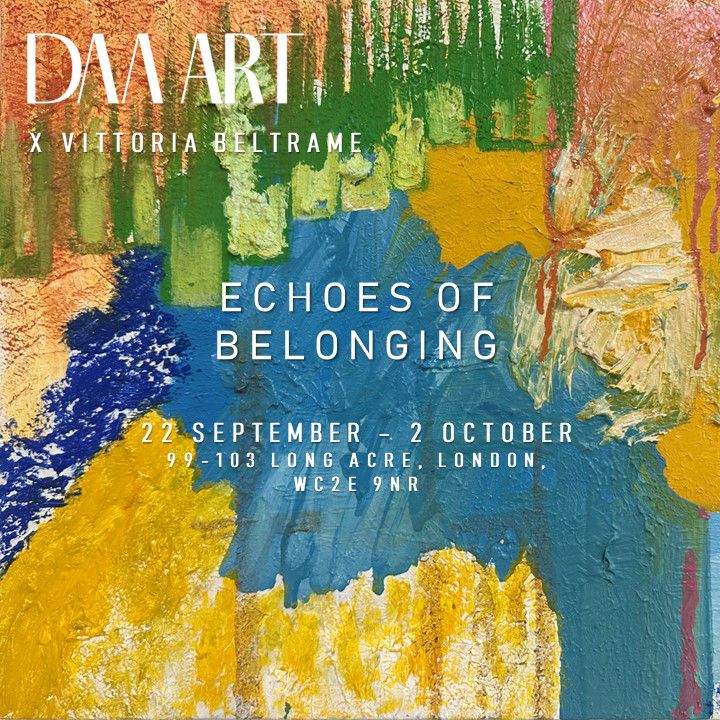Echoes of Belonging

The 21st century has brought about new dimensions to the relationship between alienation, aesthetic choices, and art. Artists continue to navigate the complexities of modern life, using their work to stimulate conversations about technology, society, identity, and the evolving nature of human connections. The rapid pace of technological advancement can sometimes lead to a sense of alienation as individuals grapple with changes in their daily lives. On one hand, technology can foster connections across great distances, but on the other, it might lead to disconnection from immediate surroundings and interpersonal relationships. Contemporary aesthetics are marked by diversity and fluidity, and traditional distinctions between high and low art, as well as rigid genre boundaries, have blurred. Art has seen a rise in interdisciplinary approaches, and aesthetic choices are often used to convey complex emotions and concepts. The aesthetic of alienation in contemporary art might involve a juxtaposition of contrasting elements, combining traditional and digital techniques, or employing minimalist or maximalist approaches to create evocative compositions.
With Gilles Deleuze´s concept of "deterritorialization" and "reterritorialization" explored within the exhibition, the audience can engage and analyse a form of alienation and reconnection. Deterritorialization involves breaking away from established structures, norms, and identities, which might be seen as a type of alienation from familiar frameworks. Reterritorialization, on the other hand, involves creating new connections and re-establishing identity and meaning, which could be seen as a form of reintegration or reconnection. In Deleuze´s view, alienation might not necessarily be negative. It can also signify the breaking away from fixed identities and structures, enabling individuals to explore new possibilities and connections. This perspective aligns with the emphasis on becoming and the constant process of change and transformation. His philosophy encourages the audience to think beyond binary oppositions and explore the complexities of existence - while art becomes a tool to try to make sense out of chaos.
In the exhibition "Echoes of Belonging" presented by Daa Art and curator Vittoria Beltrame, the artwork is characterised by its openness, adaptability, and willingness to engage with the complexities and contradictions of the modern world. The title reflects on the numbness and confusion given by the state of society, yet does so in a humorous way wanting to bring a positive spin into the equation, reminding us how art has the power to bring people together. The art reflects on the dynamic interplay between tradition and innovation, personal and global, and actual and virtual, inviting viewers to explore and question the boundaries of artistic expression. The exhibition explores these feelings of alienation, both as a reaction to and reflection of the technological shifts in society. The concept of alienation is explored through isolated characters, stark environments, and symbolic imagery that conveys a sense of detachment. The artworks also demonstrate a sense of disorder, unpredictability, and a lack of control through dynamic compositions, or the juxtaposition of conflicting elements that create a sense of turmoil. It investigates spaces that exist outside of societal norms and challenge conventional definitions - a heterotopia that can be utopian or dystopian, real or imagined to evoke feelings of displacement, disorientation, or fascination. Muted colour palettes, evocative imagery, and introspective compositions in the exhibited works convey a sense of melancholy that captures the bittersweet aspects of human experience.
Aoibhin Maguire and Sarah-Athina Nahas´ pieces might convey a sense of beauty within the chaos or a struggle to find harmony. Nora Neagoe, Ranny Cooper and Suzanna James examine how personal and cultural identities are shaped by contemporary experiences of alienation. This is done by addressing issues related to gender, sexuality, displacement and the role of the human-being with a structured society. Phillip Reeves, Daisy Clarke, Malgorzata Drohomirecka and Diana Zrnic´s pieces depict heterotopias as places that blur the boundaries between reality and imagination, exploring the interplay between alienation and the potential for new perspectives. At the same time, Daisy Clarke and Phillip Reeves´ pieces represent melancholic landscapes that evoke a sense of nostalgia, reflecting on moments of alienation and introspection. These pieces juxtapose feelings of isolation with the beauty of solitude. Yves Leather plays with recognisable objects of military nature, highlighting the sense of indignation with the crisis of living. His work often includes performance engaging with the public where he invites the audience to participate and "shoot" the artwork.
Ultimately, the combination of these themes offers artists a rich palette to communicate complex emotions, challenge conventional perspectives, and inspire introspection in viewers. The artworks resonate deeply, inviting the audience to engage with the intricacies of the human condition and the complex relationships between these concepts. With all the alienating and problematic thematics that society is bombarded with, art offers a safe space of expression and community that stimulate a primordial sense of togetherness and harmony, once again highlighting the chaos and feeling of unsettlement these topics stimulate, juxtaposed with the intimacy that creativity brings.